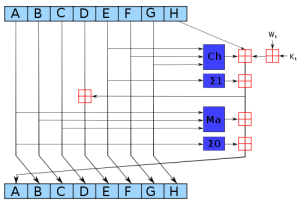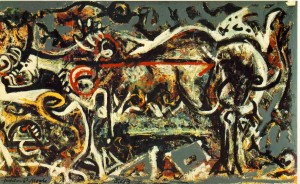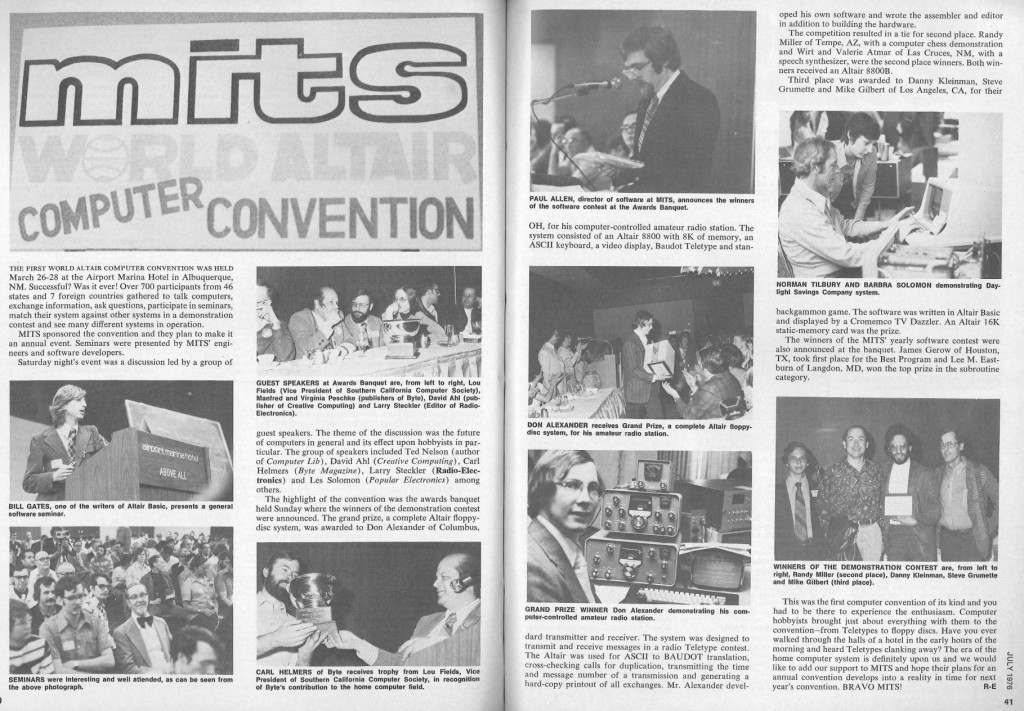Excerpts of Jürgen Schmidhuber’s talk on beauty, General AI, Gödel Machines, curiosity, and self-motivated rewards.… Read the rest
Category: Computers
Parsimonious Portmanteaus
 Meaning is a problem. We think we might know what something means but we keep being surprised by the facts, research, and logical difficulties that surround the notion of meaning. Putnam’s Representation and Reality runs through a few different ways of thinking about meaning, though without reaching any definitive conclusions beyond what meaning can’t be.
Meaning is a problem. We think we might know what something means but we keep being surprised by the facts, research, and logical difficulties that surround the notion of meaning. Putnam’s Representation and Reality runs through a few different ways of thinking about meaning, though without reaching any definitive conclusions beyond what meaning can’t be.
Children are a useful touchstone concerning meaning because we know that they acquire linguistic skills and consequently at least an operational understanding of meaning. And how they do so is rather interesting: first, presume that whole objects are the first topics for naming; next, assume that syntactic differences lead to semantic differences (“the dog” refers to the class of dogs while “Fido” refers to the instance); finally, prefer that linguistic differences point to semantic differences. Paul Bloom slices and dices the research in his Précis of How Children Learn the Meanings of Words, calling into question many core assumptions about the learning of words and meaning.
These preferences become useful if we want to try to formulate an algorithm that assigns meaning to objects or groups of objects. Probabilistic Latent Semantic Analysis, for example, assumes that words are signals from underlying probabilistic topic models and then derives those models by estimating all of the probabilities from the available signals. The outcome lacks labels, however: the “meaning” is expressed purely in terms of co-occurrences of terms. Reconciling an approach like PLSA with the observations about children’s meaning acquisition presents some difficulties. The process seems too slow, for example, which was always a complaint about connectionist architectures of artificial neural networks as well. As Bloom points out, kids don’t make many errors concerning meaning and when they do, they rapidly compensate.… Read the rest
Algorithmic Aesthetics
Jared Tarbell’s work in algorithmic composition via processing.org continues to amaze me. See more, here. The relatively compact descriptions of complex landscapes lend themselves to treatment as aesthetic phenomena where the scale of the grammars versus the complexity of the results asks the question what is art and how does it relate to human neurosystems?
Substitutions, Permutations, and Economic Uncertainty
 When Robert Schiller was awarded the near-Nobel for economics there was also a tacit blessing that the limits of economics as a science were being recognized. You see, Schiller’s most important contributions included debunking the essentials of market behavior and replacing it with the irrationals of behavioral psychology.
When Robert Schiller was awarded the near-Nobel for economics there was also a tacit blessing that the limits of economics as a science were being recognized. You see, Schiller’s most important contributions included debunking the essentials of market behavior and replacing it with the irrationals of behavioral psychology.
Schiller’s pairing with Eugene Fama in the Nobel award is ironic in that Fama is the father of the efficient market hypothesis that suggests that rational behavior should overcome those irrational tendencies to reach a cybernetic homeostasis…if only the system were free of regulatory entanglements that drag on the clarity of the mass signals. And all these bubbles that grow and burst would be smoothed out of the economy.
But technological innovation can sometimes trump old school musings and analysis: BitCoin represents a bubble in value under the efficient market hypothesis because the currency value has no underlying factual basis. As the economist John Quinnen points out in The National Interest:
But in the case of Bitcoin, there is no source of value whatsoever. The computing power used to mine the Bitcoin is gone once the run has finished and cannot be reused for a more productive purpose. If Bitcoins cease to be accepted in payment for goods and services, their value will be precisely zero.
In fact, that specific computing power consists of just two basic functions: substitution and permutation. So some long string of transactions have all their bits substituted with other bits, then blocks of those bits are rotated and generally permuted until we end up with a bit signature that is of fixed length but that is statistically uncorrelated with the original content. And there is no other value to those specific (and hard to do) computations.… Read the rest
Novelty in the Age of Criticism
Gary Cutting from Notre Dame and the New York Times knows how to incite an intellectual riot, as demonstrated by his most recent The Stone piece, Mozart vs. the Beatles. “High art” is superior to “low art” because of its “stunning intellectual and emotional complexity.” He sums up:
My argument is that this distinctively aesthetic value is of great importance in our lives and that works of high art achieve it much more fully than do works of popular art.
But what makes up these notions of complexity and distinctive aesthetic value? One might try to enumerate those values or create a list. Or, alternatively, one might instead claim that time serves as a sieve for the values that Cutting is claiming make one work of art superior to another, thus leaving open the possibility for the enumerated list approach to be incomplete but still a useful retrospective system of valuation.
I previously argued in a 1994 paper (published in 1997), Complexity Formalisms, Order and Disorder in the Structure of Art, that simplicity and random chaos exist in a careful balance in art that reflects our underlying grammatical systems that are used to predict the environment. And Jürgen Schmidhuber took the approach further by applying algorithmic information theory to novelty seeking behavior that leads, in turn, to aesthetically pleasing models. The reflection of this behavioral optimization in our sideline preoccupations emerges as art, with the ultimate causation machine of evolution driving the proximate consequences for men and women.
But let’s get back to the flaw I see in Cutting’s argument that, in turn, fits better with Schmidhuber’s approach: much of what is important in art is cultural novelty. Picasso is not aesthetically superior to the detailed hyper-reality of Dutch Masters, for instance, but is notable for his cultural deconstruction of the role of art as photography and reproduction took hold.… Read the rest
Signals and Apophenia
 The central theme in Signals and Noise is that of the inverse problem and its consequences: given an ocean of data, how does one uncover the true signals hidden in the noise? Is there even such a thing? There’s an obsessive balance between apophenia and modeling somewhere built into our skulls.
The central theme in Signals and Noise is that of the inverse problem and its consequences: given an ocean of data, how does one uncover the true signals hidden in the noise? Is there even such a thing? There’s an obsessive balance between apophenia and modeling somewhere built into our skulls.
The cover art for Signals and Noise reflects those tendencies. There is a QR Code that encodes a passage from the book, and then there is a distortion of the content of the QR Code. The distortion, in turn, creates a compelling image. Is it a fly creeping to the left or a lion’s head tilted to the right?
Yes.
A free hard-cover copy of Signals and Noise to anyone who decodes the QR Code. Post a copy of the text to claim your reward.… Read the rest
Hits and MITS
I just came across the following scan that describes how an MITS Altair 8800B became my first personal computer, journeying from Albuquerque to Las Cruces, New Mexico and getting an EEPROM burner attached to a ribbon cable snaking out through the enameled steel case. The speech synthesizer predated stored digital samples, by the way, so it instead emulated phonemic mixtures generated by digital waveform filtering.
And that young chap on the left would later become my boss, three or four parts removed, at Microsoft. I still have that Altair, too, safely stored away.
Original PDF Scan:
Singularity and its Discontents
 If a machine-based process can outperform a human being is it significant? That weighty question hung in the background as I reviewed Jürgen Schmidhuber’s work on traffic sign classification. Similar results have emerged from IBM’s Watson competition and even on the TOEFL test. In each case, machines beat people.
If a machine-based process can outperform a human being is it significant? That weighty question hung in the background as I reviewed Jürgen Schmidhuber’s work on traffic sign classification. Similar results have emerged from IBM’s Watson competition and even on the TOEFL test. In each case, machines beat people.
But is that fact significant? There are a couple of ways we can look at these kinds of comparisons. First, we can draw analogies to other capabilities that were not accessible by mechanical aid and show that the fact that they outperformed humans was not overly profound. The wheel quickly outperformed human legs for moving heavy objects. The cup outperformed the hands for drinking water. This then invites the realization that the extension of these physical comparisons leads to extraordinary juxtapositions: the airline really outperformed human legs for transport, etc. And this, in turn, justifies the claim that since we are now just outperforming human mental processes, we can only expect exponential improvements moving forward.
But this may be a category mistake in more than the obvious differentiator of the mental and the physical. Instead, the category mismatch is between levels of complexity. The number of parts in a Boeing 747 is 6 million versus one moving human as the baseline (we could enumerate the cells and organelles, etc., but then we would need to enumerate the crystal lattices of the aircraft steel, so that level of granularity is a wash). The number of memory addresses in a big server computer is 64 x 10^9 or higher, with disk storage in the TBs (10^12). Meanwhile, the human brain has 100 x 10^9 neurons and 10^14 connections. So, with just 2 orders of magnitude between computers and brains versus 6 between humans and planes, we find ourselves approaching Kurzweil’s argument that we have to wait until 2040.… Read the rest
Methodical Play
 My fourteen-year-old interviewed a physicist yesterday. I had the privilege of being home over the weekend and listened in; my travel schedule has lately been brutal, with the only saving grace being moments like right now en route to Chicago when I can collapse into reading and writing for a few whitenoise-washed moments. And the physicist who was once his grandfather said some remarkable things:
My fourteen-year-old interviewed a physicist yesterday. I had the privilege of being home over the weekend and listened in; my travel schedule has lately been brutal, with the only saving grace being moments like right now en route to Chicago when I can collapse into reading and writing for a few whitenoise-washed moments. And the physicist who was once his grandfather said some remarkable things:
- Physics consists of empirical layers of untruth
- The scientific method is never used as formulated
- Schools, while valuable, won’t teach how to be a scientist
- The institutions of physics don’t support the creativity required to be a scientist
Yet there was no sense of anger or disillusionment in these statements, just a framing of the distinctions between the modern social model surrounding what scientists do and the complex reality of how they really do their work.
The positives were that play is both the essential ingredient and the missing determinant of the real “scientific method.” Mess around, try to explain, mess around some more. And what is all that play getting this remarkable octogenarian? Possible insights into the unification of electromagnetism and the strong nuclear force. The interview journey passed from alignment of quarks to the beams of neutron stars, igniting the imaginations of all the minds on the call.
But if there is no real large-scale method to this madness, what might we conclude about the rationality of the process of science? I would advocate that the algorithmic model of inference is perhaps the best (and least biased) way of approaching the issue of scientific method. By constantly reshuffling the available parameters and testing the compressibility of models, play is indistinguishable from science when the play pivots on best explanation.… Read the rest
Curiouser and Curiouser
 Jürgen Schmidhuber’s work on algorithmic information theory and curiosity is worth a few takes, if not more, for the researcher has done something that is both flawed and rather brilliant at the same time. The flaws emerge when we start to look deeply into the motivations for ideas like beauty (is symmetry and noncomplex encoding enough to explain sexual attraction? Well-understood evolutionary psychology is probably a better bet), but the core of his argument is worth considering.
Jürgen Schmidhuber’s work on algorithmic information theory and curiosity is worth a few takes, if not more, for the researcher has done something that is both flawed and rather brilliant at the same time. The flaws emerge when we start to look deeply into the motivations for ideas like beauty (is symmetry and noncomplex encoding enough to explain sexual attraction? Well-understood evolutionary psychology is probably a better bet), but the core of his argument is worth considering.
If induction is an essential component of learning (and we might suppose it is for argument’s sake), then why continue to examine different parameterizations of possible models for induction? Why be creative about how to explain things, like we expect and even idolize of scientists?
So let us assume that induction is explained by the compression of patterns into better and better models using an information theoretic-style approach. Given this, Schmidhuber makes the startling leap that better compression and better models are best achieved by information harvesting behavior that involves finding novelty in the environment. Thus curiosity. Thus the implementation of action in support of ideas.
I proposed a similar model to explain aesthetic preferences for mid-ordered complex systems of notes, brush-strokes, etc. around 1994, but Schmidhuber’s approach has the benefit of not just characterizing the limitations and properties of aesthetic systems, but also justifying them. We find interest because we are programmed to find novelty, and we are programmed to find novelty because we want to optimize our predictive apparatus. The best optimization is actively seeking along the contours of the perceivable (and quantifiable) universe, and isolating the unknown patterns to improve our current model.… Read the rest
